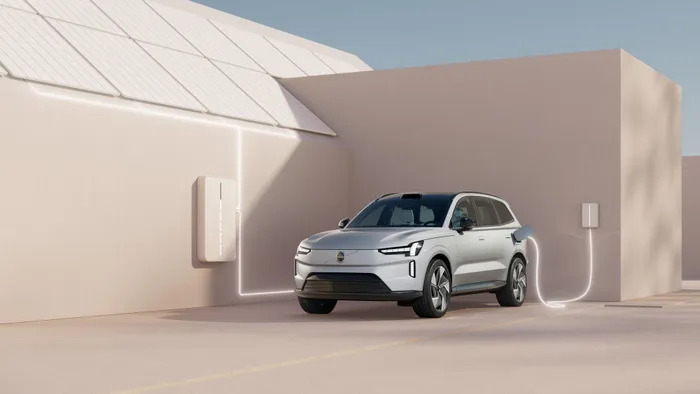When will electric cars be able to power our homes?

Johannesburg - Picture the scene: South Africa’s beleaguered power utility has just announced an immediate escalation to an even loftier stage of load-shedding. And your suburb is right in the firing line.
It’s early evening and your home’s modest solar-charged battery pack is fast depleting, but you’ve yet to cook dinner and your devices are all running dangerously low on battery. The answer to your problems, though, is parked in the garage in the form of your new electric car. Enter the concept of bi-directional charging.
So, what exactly is bi-directional (which is sometimes spelled “bidirectional”) charging? Well, it’s exactly as the name suggests: a system with the ability to move charge in two directions. This stands in contrast to the unidirectional set-ups employed by most electric vehicles (EVs) until now, with such models able to only accept charge.
Which all-electric cars offer bi-directional charging?
In the example above, the all-electric car with bi-directional charging capabilities would be able to draw charge from the home’s electricity mains (or, indeed, a solar set-up) or provide power stored in its lithium-ion battery pack back to the home (or a single appliance, another compatible vehicle or even the grid itself). In short, bi-directional charging means electricity can flow both ways, which effectively allows an EV to act as a “generator”.
Since it’s still a relatively fresh concept, this capability is currently available on only a very limited number of electric cars, though the technology is expected to become more prevalent in the coming years.

The most recent example is the new Volvo EX90, which the Swedish luxury firm says is “hardware-ready” for this form of charging and will come with a special bi-directional wallbox in select markets. The Kia EV6, which is also SA-bound, also offers this capability in some markets as do a handful of other cars not offered locally, including the later-model Nissan Leaf, Hyundai Ioniq 5 and Ford F-150 Lightining.
Other carmakers such as Audi are said to be working on bi-directional charging systems.
The simple answer is that, for now at least, you can’t use an electric car to power your home, but this technology is likely to become available within a few years.
What are the various types of bi-directional charging?
In the realm of electric cars, the types of bi-directional charging are grouped according to their applications. There are three distinct sorts:
- Vehicle-to-grid
- Vehicle-to-home
- Vehicle-to-load
Vehicle-to-grid (V2G) charging allows plugged-in fully electric vehicles to collectively form a virtual powerplant, pushing power back into the grid when demand is particularly high. Then there’s vehicle-to-home (V2H) charging, where the energy stored in the car’s battery is used to power a house or building. It’s this category that is perhaps most pertinent to South Africans seeking back-up power during periods of rolling blackouts.
Finally, we have vehicle-to-load (V2L) charging, where appliances – or even another compatible EV – are powered directly from the vehicle’s battery. Though this is technically a simpler form of bi-directional charging, most electric cars aren’t yet equipped to perform such a task. For instance, Tesla’s user manual for the Model 3 even cautions against using the vehicle’s battery as “a stationary power source”, saying “doing so voids the warranty”.
Can bi-directional charging save you money?
While the benefits of employing your EV’s battery pack as an extra energy supply are obvious in a country well-versed in the daily tribulations of load-shedding, such a system could also potentially save you money. In markets where the cost of electricity increases during peak times, it would make sense to charge up the vehicle’s battery during low-demand hours, storing that energy for later use (or even selling it back to the grid) during higher-demand periods.
A similar approach could be taken here in South Africa by those who utilise clean local sources of energy, such as solar systems. For instance, power generated by the sun could charge the electric car’s battery pack during the day (something many owners already do), which could then supplement or even totally cover the home’s energy requirements during the evening. And it need not be a logistical nuisance, since models such as the EX90 will come with a home energy management system that automatically monitors and optimises the household’s consumption. Sounds ideal for SA, doesn’t it?
Would the benefits of bi-directional charging capabilities make you consider an electric car? Let us know…
Related Topics: